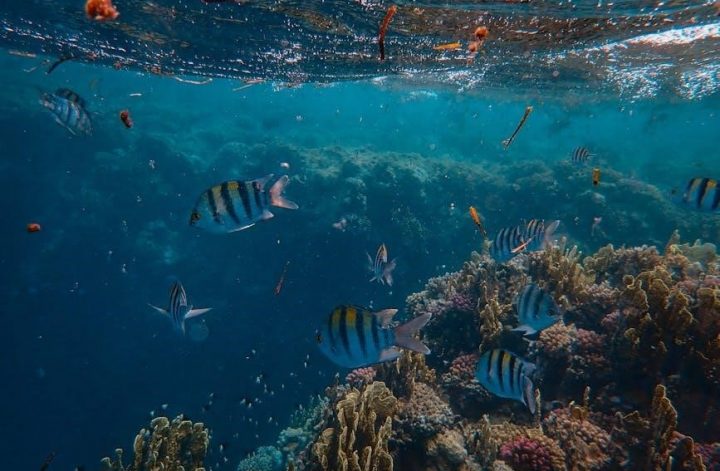Your Inner Fish by Neil Shubin explores the evolutionary journey of the human body, tracing its origins to ancient fish. Through fossils and anatomy, Shubin reveals how our bodies reflect millions of years of adaptation and transformation.
Overview of the Book and Its Author
Your Inner Fish, written by renowned paleontologist and anatomist Neil Shubin, is a fascinating exploration of human evolution and anatomy. Shubin, who discovered the groundbreaking fossil Tiktaalik, bridges the gap between ancient life forms and modern humans. The book delves into the 3;5-billion-year history of the human body, revealing how traits from early fish, reptiles, and mammals have evolved into the complex structures we see today. Shubin’s engaging narrative makes evolutionary biology accessible to a broad audience, showcasing how fossils, comparative anatomy, and developmental biology uncover the deep connections between species. By examining the transition from fish to land-dwelling creatures and beyond, Shubin demonstrates that many of our bodily features, from limbs to skulls, are remnants of our ancient ancestors. This award-winning book has become a cornerstone in popular science literature, offering a fresh perspective on human origins and our place in the natural world.

The Central Idea of Human Evolution

The central idea of Your Inner Fish is that the human body is a living fossil, carrying within it the remnants of ancient evolutionary transformations. Neil Shubin argues that our anatomy, from the structure of our teeth to the complexity of our inner ear, is a direct result of millions of years of evolutionary adaptation. By tracing the origins of human features back to early fish, reptiles, and mammals, Shubin illustrates how evolution has crafted the human form through a series of gradual changes. The book emphasizes that understanding our evolutionary past is key to appreciating the intricacies of modern human biology. This perspective not only explains why certain body parts exist but also reveals how they have been repurposed over time to meet the demands of changing environments. Shubin’s work challenges readers to see themselves as part of a broader evolutionary narrative, connected to all life on Earth.
Key Themes and Concepts Explored
In Your Inner Fish, Neil Shubin delves into the deep connections between human anatomy and the evolutionary history of ancient creatures. A central theme is the concept of “deep homology,” where organs and body parts in vastly different species share common origins. For instance, the human hand, wing of a bat, and fin of a fish are shown to have evolved from the same ancestral limb structure. Shubin also explores the idea that humans are not separate from nature but are part of a continuous evolutionary tree, with our bodies serving as a “living fossil” of ancient life forms. The book highlights how fossils like Tiktaalik reveal critical transitions in evolution, such as the movement of fish onto land. Additionally, Shubin examines how understanding evolution can explain human health and disease, linking our modern biology to millions of years of adaptation. These themes weave together to present a compelling narrative of how our bodies reflect the history of life on Earth.

The Evolutionary Journey from Fish to Humans
The journey from ancient fish to humans is traced through fossils like Tiktaalik, revealing how fins evolved into limbs. This transition laid the groundwork for human anatomy, as explained in Your Inner Fish.
The Fish-to-Tetrapod Transition
The transition from fish to tetrapods (four-limbed vertebrates) is a pivotal moment in evolutionary history. Fossils like Tiktaalik reveal how ancient fish evolved limb-like fins and neck joints, enabling movement on land. This adaptation marked the beginning of life outside water, with early tetrapods retaining aquatic features like gills. The development of stronger skeletons and articulated limbs was crucial for survival in terrestrial environments. Shubin’s Your Inner Fish details this journey, highlighting how these anatomical changes laid the foundation for modern human anatomy. The transition also involved significant shifts in skull structure, as fish-like skulls adapted to support breathing and sensory functions on land. These evolutionary innovations, preserved in fossils, provide a clear link between aquatic ancestors and the first land-dwelling creatures.
The Role of Developmental Biology in Understanding Evolution
Developmental biology plays a crucial role in understanding evolution by revealing how embryos develop across species, showcasing shared ancestry. Neil Shubin highlights that early embryonic stages of fish, humans, and other animals are remarkably similar, with homologous structures like fins and limbs. These similarities demonstrate how evolutionary changes occur through modifications in developmental processes. For instance, genes like Pax regulate limb formation in both fish and humans, illustrating conserved genetic mechanisms. Shubin explains that small changes in developmental timing or gene expression can lead to significant anatomical differences over millions of years. By studying these processes, scientists can trace the evolutionary history of complex traits, such as the human body’s intricate systems. This approach bridges the gap between genetics, anatomy, and evolution, offering insights into how life on Earth has diversified while retaining fundamental biological connections.
How Ancient Fish Anatomy Relates to the Human Body
The anatomy of ancient fish holds remarkable similarities to the human body, revealing a shared evolutionary history. Neil Shubin explains that the skeletal system of early fish laid the foundation for human limbs. For instance, the “one bone, two bones, lots of blobs, digits” pattern in fish fins mirrors the structure of human arms and legs. This suggests that our limbs evolved from the fins of ancient aquatic creatures. Additionally, the skull and jaw structures of early fish are echoed in the human skull, with specific bones aligning in both species. Even the teeth of ancient fish, adapted to their diets, show parallels with human dental anatomy. These connections highlight how evolutionary processes have conserved fundamental anatomical features while adapting them to different environments. By examining these similarities, Shubin illustrates that the human body is, in many ways, a refined version of ancient fish anatomy, bridging the gap between aquatic and terrestrial life forms.
Scientific Discoveries and Their Impact
Scientific discoveries in evolutionary biology, such as the finding of Tiktaalik, have revolutionized our understanding of human origins. These findings bridge gaps in the fossil record, revealing how ancient fish traits shaped human anatomy and function, profoundly impacting evolutionary science.
The Discovery of Tiktaalik and Its Significance
The discovery of Tiktaalik in 2004 by paleontologist Neil Shubin marked a groundbreaking moment in evolutionary biology. This 375-million-year-old fossil bridged the gap between fish and land-dwelling animals, providing critical insights into the transition from aquatic to terrestrial life. Tiktaalik exhibited a unique combination of fish-like features, such as gills and scales, alongside limb-like fins and a neck, which allowed it to support its head independently of its body. Its wrist-like bones in the fins suggested the potential for limb development, a key adaptation for moving onto land. This fossil not only validated theories of evolutionary transition but also highlighted how ancient anatomical structures continue to influence modern human biology. The discovery of Tiktaalik has been instrumental in reshaping our understanding of human evolution, demonstrating how our bodies retain traces of our ancient fish ancestors. This finding underscores the profound interconnectedness of life across millions of years.
How Fossil Records Reveal Human Evolution
Fossil records are a cornerstone of understanding human evolution, offering a tangible link to our ancient past. These preserved remains of plants and animals provide a chronological record of life on Earth, revealing how species have evolved and adapted over millions of years. In Your Inner Fish, Neil Shubin emphasizes the importance of fossils like Tiktaalik, which exhibit transitional features between fish and land-dwelling creatures. By studying these fossils, scientists can trace the gradual changes in anatomy that ultimately led to the development of complex life forms, including humans. The fossil record not only documents the history of life but also highlights the interconnectedness of all living organisms, showing how ancient traits are preserved in modern biology. This evidence underscores the theory of evolution, providing a clear pathway to understanding our shared ancestry with simpler, more primitive organisms.
The Role of Comparative Anatomy in Evolutionary Studies

Comparative anatomy plays a pivotal role in evolutionary studies by identifying similarities and differences in the structures of various organisms. This approach, central to Your Inner Fish, demonstrates how shared anatomical features across species reveal common ancestry. By comparing the limb bones of fish, amphibians, and humans, for instance, scientists can trace the evolutionary transformation of fins into arms and legs. Such comparisons highlight how ancient structures have been repurposed over time to suit different environments and functions. The study of comparative anatomy also sheds light on homologous organs, such as the human ear and the fish inner ear, which share developmental origins despite differing purposes. This method not only supports the theory of evolution but also provides a framework for understanding the intricate relationships between diverse life forms. Through comparative anatomy, Neil Shubin illustrates how the human body is a living archive of evolutionary history, connecting us to our distant ancestors in unexpected ways.




